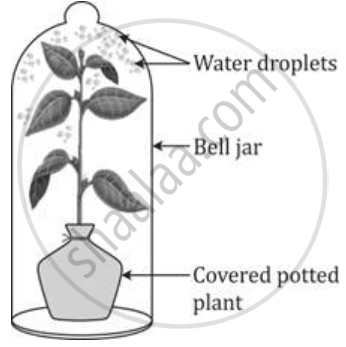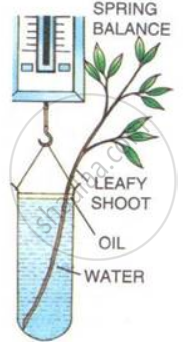Advertisements
Advertisements
प्रश्न
An apparatus as shown below was set up to investigate a physiological process in plants. The setup was kept in sunlight for two hours. Droplets of water were then seen inside the bell jar. Answer the questions that follow:

List three adaptations in plants to reduce the above mentioned process.
उत्तर
Adaptations in plants to reduce transpiration are
- Leaves may be modified into spines as in cactus or into needles as in pines.
- The number of stomata is reduced and they may be sunken in pits.
- Leaves may be folded or rolled up.
APPEARS IN
संबंधित प्रश्न
Discuss the factors responsible for ascent of xylem sap in plants
Which of the following helps in the upward movement of water and dissolved minerals from the roots to the leaves through the stem?
Given below is a diagrammatic sketch (surface view) of a stomatal apparatus from a dicot leaf.

(a) Label the parts numbers 1-3
(b) Is this state, open or closed?
(c) Is this stoma, of a dicot leaf or a monocot leaf?
(d) Redraw a sketch of the stomatal apparatus in the state opposite to the one shown here.
Distinguish between the following :
Cuticular transpiration and lenticular transpiration
Given alongside is the diagram of an experimental set-up to demonstrate a certain phenomenon in plants.

Would it make a difference if the experimental set-up is kept in bright sunshine?
Define transpiration.
What type of transpiration is possible in the xerophyte Opuntia?
What causes the opening and closing of guard cells of stomata during transpiration?
Transpiration takes place through ______.
Define the term Vital capacity.
